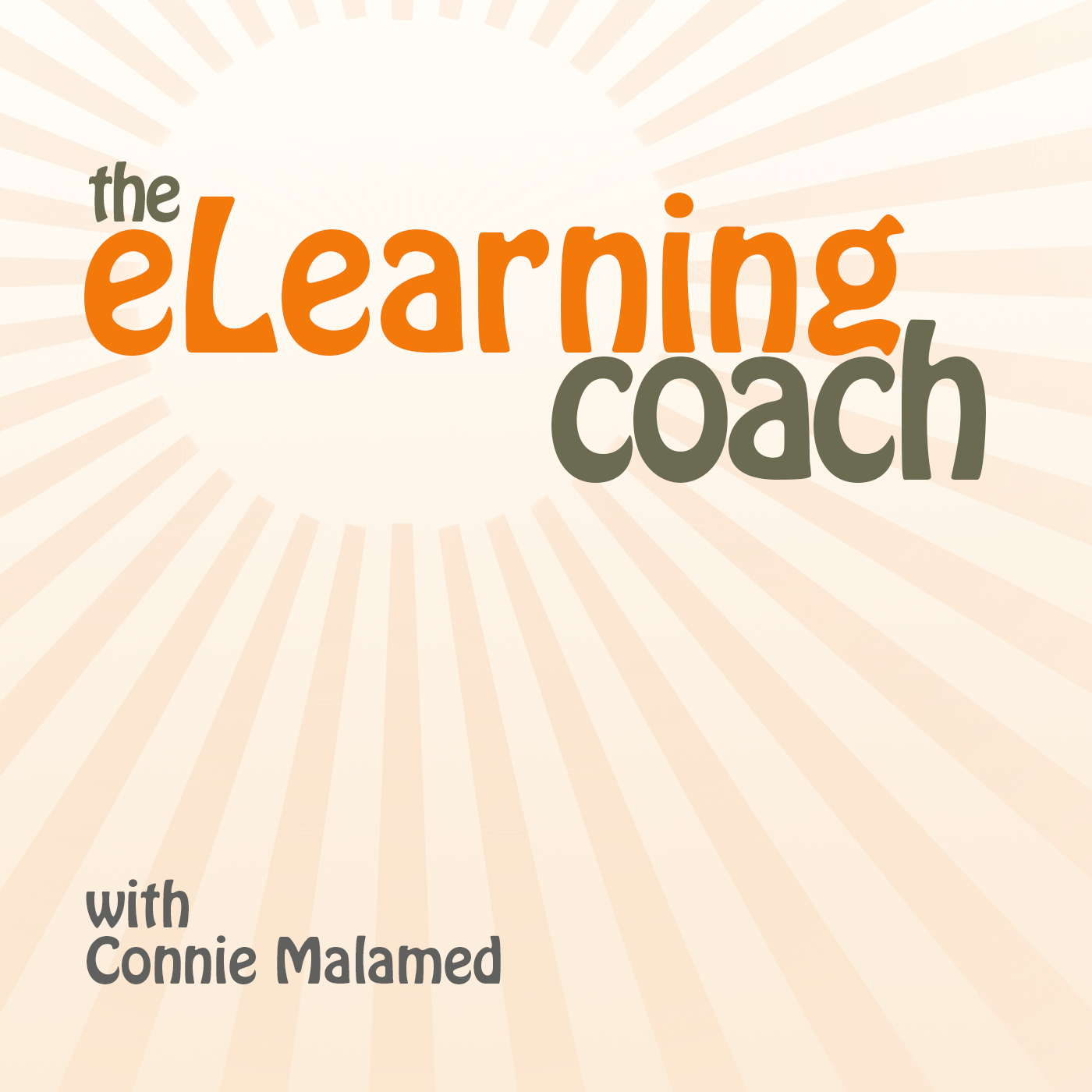
Designing with Love
Hosted by Grand Canyon University (GCU) adjunct instructor and professional instructional designer Jackie Pelegrin, this podcast explores instructional design, e-learning, and how to incorporate AI technology into different aspects of your work. Tune in for expert tips, real-world insights, and inspiring stories from students, alumni, and leaders in the field.
Designing with Love
Designing for the Connected Learner: A Connectivism Guide
Ever wondered why traditional learning designs feel increasingly outdated in our digital world? The answer lies in Connectivism: a revolutionary approach that's reshaping how effective learning happens today.
Connectivism recognizes that in our networked age, learning isn't confined to classrooms or individual minds. Instead, it flows through connections between people, technologies, and information sources. As George Siemens wisely noted, "The pipe is more important than the content within the pipe," meaning how we access knowledge matters as much as what we know.
For instructional designers, this shift demands new approaches. When learners are drowning in information and knowledge evolves rapidly, our role transforms from content creators to network guides. This episode unpacks five practical strategies to apply connectivism: designing for discovery rather than delivery, building meaningful networks between learners and experts, teaching critical digital literacy, encouraging lifelong learning habits, and leveraging real-time collaborative tools.
Whether you're designing for corporate training, higher education, or online communities, understanding connectivism will transform your approach. The interactive diagram in the show notes provides additional resources to help implement these strategies in your next project. Share your thoughts and experiences - I'd love to hear how connectivism is sparking new ideas in your instructional design practice!
🔗 Episode Links:
Please check out the resource mentioned in the episode. Enjoy!
Join PodMatch!Use the link to join PodMatch, a place for hosts and guests to connect.
Disclaimer: This post contains affiliate links. If you make a purchase, I may receive a commission at no extra cost to you.
💟 Designing with Love + allows you to support the show by keeping the mic on and the ideas flowing. Click on the link above to provide your support.
☕ Buy Me a Coffee is another way you can support the show, either as a one-time gift or through a monthly subscription.
🗣️ Want to be a guest on Designing with Love? Send Jackie Pelegrin a message on PodMatch, here: Be a guest on the show
🌐 Check out the show's website here: Designing with Love
📱 Send a text to the show by clicking the Send Jackie a Text link above.
👍🏼 Please make sure to like and share this episode with others. Here's to great learning!
Hello and welcome to the Designing with Love podcast. I am your host, jackie Pellegrin, where my goal is to bring you information, tips and tricks as an instructional designer. Hello, gcu students, alumni and fellow educators, welcome to episode 48 of the Designing with Love podcast. Today we're diving into a learning theory that is especially relevant in our digital world, which is connectivism. Whether you're designing training for a corporate audience, building e-learning modules for higher education or crafting learning experiences for online communities, understanding connectivism can shift the way you approach learning design. So grab your coffee notebook or just a quiet moment to tune in. Let's explore what it means to design for connection. First, let's start with the basics.
Speaker 1:What is connectivism? Connectivism is a learning theory introduced by George Siemens and Stephen Downs in the early 2000s. It was developed in response to the digital age, a time when learning just isn't happening in the classrooms, textbooks or even inside a person's mind. At its core, connectivism says that learning happens across networks of people, information technology and artificial intelligence. It's about knowing where to find knowledge, how to connect with the right resources and how to stay current in a rapidly changing world. The key idea here is this Learning is no longer an internal, individualistic activity. It's networked, social and ongoing. This has huge implications for how we design learning experiences. Now you might be thinking how does this apply to me as an instructional designer? Let me break it down with a few practical reasons why connectivism is worth paying attention to. Reason number one learners are overwhelmed with information. Connectivism helps us guide learners in navigating, filtering and evaluating what's relevant. Reason number two knowledge changes fast. This is especially true in fields like technology, business and healthcare. Designers need to create experiences that teach how to keep learning, not just what to learn. And finally, reason number three social learning is more powerful than ever. We're not just learning from instructors. We're learning from YouTube videos, online forums, blogs, podcasts like this one and professional networks. If we can design experiences that tap into these real-world learning habits, we become guides, not just content creators. So how do we actually apply connectivism when designing learning?
Speaker 1:Here are five practical strategies I will share with you. Strategy number one design for discovery. Instead of delivering all the content, encourage learners to explore the resources on their own. For example, include curated links, open-ended prompts or collaborative research tasks. Strategy number two build in networks. Create opportunities for learners to connect with each other, industry experts or online communities. This could look like discussion boards, peer reviews or even social media prompts. Strategy number three teach digital literacy. Help learners evaluate information sources, spot misinformation and use tools like search engines or AI effectively. These are critical skills. Strategy number four encourage lifelong learning. Include reflective prompts that get learners thinking where can I continue learning about this? Who could I follow to learn more? And finally, strategy number five use real-time tools. Leverage platforms that allow for dynamic real-time learning. This can include things like collaborative documents, chat-based discussion apps or even webinars.
Speaker 1:And here's a tip when designing your next course, ask yourself am I helping learners build connections to people, tools or ideas that extend beyond the course itself? All right, so now that you have some strategies for how to incorporate connectivism into your learning experiences, I will provide you with a real-world example. Say, you're designing an onboarding module for a technology company. Instead of a static course on company tools, you can create the following A collaborative Trello board where team members can share their own tips. A curated list of Slack channels or tech blogs to follow. A peer mentor system that connects new hires to experienced staff. Here you're not just teaching how to use the tool, you're showing where to go and who to ask when things change. That's connectivism in action. I hope you have found this information about how to use connectivism in your learning designs helpful as you design for learners in this digital age.
Speaker 1:As a recap, we covered what connectivism is, why it matters in instructional design, how to apply it in your designs and a real-world example. If today's episode sparked something new for you maybe a new idea or a fresh way to look at learning I would love to hear about it. You can send me a text message or visit the companion blog site and leave a comment. You are also welcome to view the interactive diagram that covers the key information and strategies shared in this episode, which is available in the show notes.
Speaker 1:As I conclude this episode, I would like to share an inspiring quote by George Siemens the pipe is more important than the content within the pipe. In other words, knowing how to connect is just as valuable as what you know. As instructional designers, we have the opportunity to design those pipes, the networks, systems and pathways that empower learners for life. Thank you for taking some time to listen to this podcast episode today. Your support means the world to me. If you'd like to help keep the podcast going, you can share it with a friend or colleague, leave a heartfelt review or offer a monetary contribution. Every act of support, big or small, makes a difference and I'm truly thankful for you.
Podcasts we love
Check out these other fine podcasts recommended by us, not an algorithm.

Buzzcast
Buzzsprout
Podcasting Made Simple
Alex Sanfilippo, PodMatch.com
The eLearning Coach Podcast
Connie Malamed: Helps people build stand-out careers in learning design.
Dear Instructional Designer
Kristin Anthony
The Visual Lounge
TechSmith Corporation
Wake Up the Lions!
Rory Paquette
The Way I Heard It with Mike Rowe
The Way I Heard It with Mike Rowe
Book 101 Review
Daniel Lucas
Movie 101 Review
Daniel Lucas And Bob LeMent
Mental Health 101
Daniel Lucas/G.Mick Smith
LOVE Letters
Daniel Lucas
The WallBuilders Show
Tim Barton, David Barton & Rick Green
